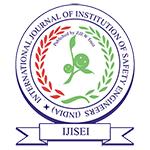Hazard Control Method in Construction Industries
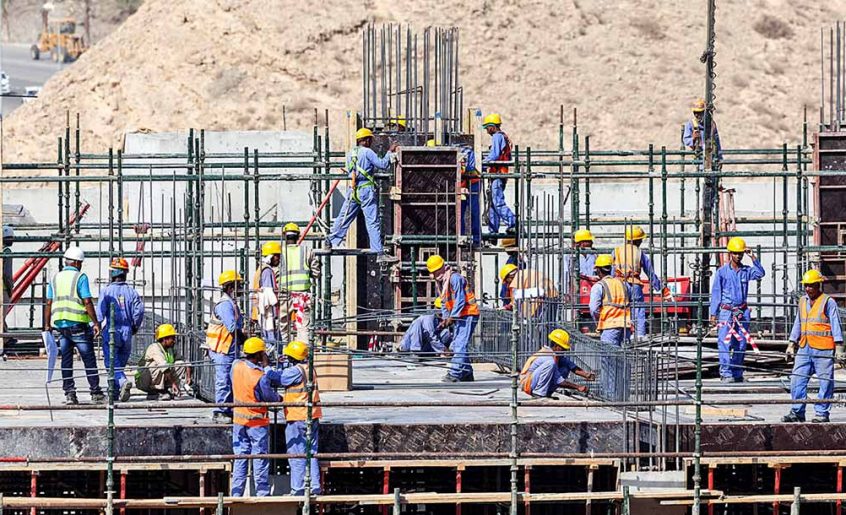
Volume 3, Issue 1, January – March 20
Hazard Control Method in Construction Industries
Annapurna Adiley,
Dy. Director (General, Training & Admin.), Institution of Safety Engineers (India)
Email id: aadiley@iseindia.in
Abstract:
Poor implementation of effective hazard control method in construction industries always increases the potential risk of harm and it results accidents. Accident always create negative impacts of Construction industries business in term of delay project, Poor industries reputation in market, moral decrease of employees etc. and directly it increase the cost of projects. Hazard Control method is effective techniques used to control workplace hazard in Construction industries. Such method Control or reduce the likelihood of hazardous event occurring or Severity of harm of event or both Together. This Study Report is very help to know hazard control method and minimize risk as law as reasonably practicable (ALARP) at work place of construction industries.
Keyword: Hazard Control Method, Need of Safety in Construction Industries, Hazard in Construction Industries, Construction Industries Safety.
1. Introduction:
In India, Construction Industries is second largest industries and play major Contribution to increase GDP. Construction Industries, Create large numbers of employment opportunities and play major role to social and economic development of country. There are many segments of construction industries such as real estate that includes commercial and residential building construction, Infrastructure includes road, Railways, power like projects and Industrial Project means, construction of Plant, Chemical industries, Pipelines project etc.
Construction Industries is hazardous prone industries. As per Studies, Small Construction Industries, injuries percentage is more than large construction industries. In small Construction Industries, Accident percentage is more due to ineffective enforcement of Safety, Rules and procedure and poor management commitment or poor interest related to safety.
Many study report says that in india, about 48,000 workers die due to occupational accident annually and 38 Fatal accident occur every days in construction section industries.
In Construction Industries, each and every day activity changes and assigns to complete of such activity to migrant labours. Migrant labours comes from same region or other region of different states. Some will be skill, some be semi skill and some will be un-skill. New Joined Labour not aware about new construction work site and faces lot of challenges to identify hazard and taking adequate safety precautionary measure due to changing activity nature and work environment time to time. Similar Situation creates with unskilled labour and this may lead to cause unsafe practices and result accident.
In construction Industries, Types of Activity depends on nature of Projects. Project May be EPC, Mechanical, Civil, Electrical or others. Civil Projects work include excavation, Trenching, reinforcement work, shuttering-deshuttering, Scaffolding erection & dismantling, Brick lining, column/Beam casting, Plaster, Material handling etc. like activity. Mechanical work includes Erection, welding, Gas cutting, Material handling and lifting operation etc. like activity. Electrical Project includes Cable laying, Panel/Transformer erection and commissioning etc.
Therefore, hazard varies activity to activity as per nature of project and risk level depends on available existing control measure and safety awareness among labor including employees.
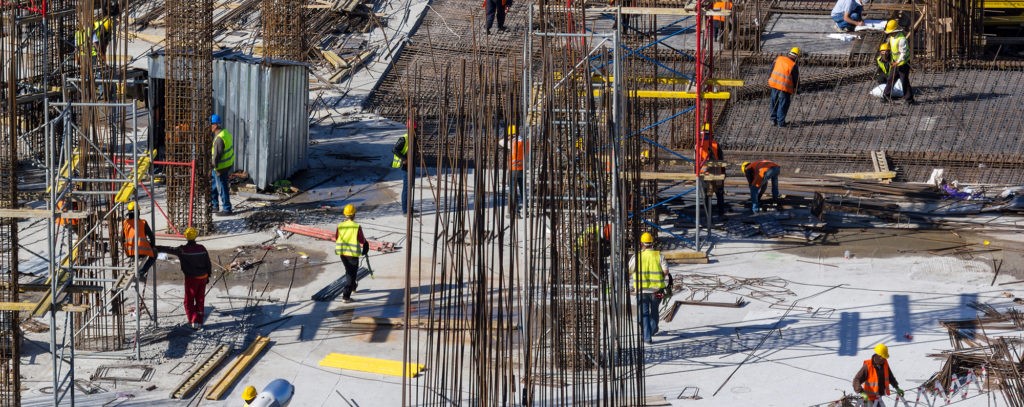
2. Why Safety is important in Construction Industries?
Safety means free from unacceptable risk of harm or from danger or such sources that have potential to cause harm in construction industries. Moral, Legal & Economical Point of view, Safety is very import in construction industries.
Moral responsibility means, being human it is responsibilities of every one to protect own self and others.The accident causes social loss in great magnitude in form of suffering, loss of earning capacity and effected to injured or insured family and society.
Legal responsibilities means, as per Respective State or country legislation, every occupier or employer have responsibility to ensure all safety control measure to protect to their employees, stakeholder and environment. Occupier means a person who has ultimate control over construction industries is known as employer. It may be Company owner, managing Director or others.
Economical means, Accident results great financial loss of Industries in term of medical expenses, compensation or disablement to the injured or their families, Poor organization reputation, Poor relation with employees and stakeholder, Productivity decreases
3. Hazard in Construction Industries;
Construction industries are hazardous prone industries. Hazard means any sources that have potential to cause harm that means it may lead to cause of Personnel injury, death, Property Damage or combination of these. In construction industries, there are many potential sources of harm which result accidents such as Exposed live power cable, Defective Lifting equipments & Tools, Elevated work platform without hand railing, Unguarded rotating parts of machinery etc. are example. In Construction Industries, Hazard varies Project to Project, associated activity with project and work environment. Few Major Hazard associated with Construction industries are:
- Fall Hazard
- Fall of Person :due to poor workmanship, loss of balance, uneven surface, floor opening, poor work platform, working at height without using full body harness, Defective ladder or stair, slippery floor, Loose material in assess etc. Slip & Trip hazard also comes under Fall hazard
- Fall of Materials: Due to failure of lifting appliances, Tools & tackles, Loose material Keeping at edge on height or near floor opening, Poor method of Material lifting & shifting etc.
- Mechanical hazard: Entanglement, Crushing, Shearing, Cutting, Drawing-in or trapping, Impact, Friction or abrasion, Stabbing or puncture etc. are few example of mechanical hazards.
- Electrical hazard: Such as Defective electrical Tools, Loose electrical connection, Over load electrical equipments, Static electricity, may cause of Electrocution, Fire, Burn injury, eye flash, Fall due to electrical shock.
- Fire Hazard: Such as Flammable storage near heat sources, Cooking or any sources that have potential to cause of fire and fire accident results loss of lives and property.
- Physical Hazard: Such as Heat, Cold, Poor illumination etc. Heat may cause of heat stress, Cold may cause of cold stress,
- Chemical hazard like dust, fumes, gases create central nervous system problem & respiratory problem due to inhalation and create skin problem when come in its contact.
- Environmental hazard: Such Potential Sources of harm that effect to environment and human being such as dust, fumes, Gases, NOx, SOx, Noise etc. Noise is also comes under physical hazard.
Apart from this, Vehicle movement may cause of hit to person, Hit to object or Collision or topples, Biological hazard includes Bacteria, Viruses, Mold and Fungi, Blood and Body Fluids that found at construction site during catering operation facility or Occupational health center facility area may exposed to personnel through inhalation, ingestion, injection or contact with skin. Radiation hazard may be Ionizing radiation and non-ionising radiation. X-ray, Gama ray are example of Ionizing radiation and ultraviolet (UV), lasers, radiofrequency etc are example of Non-ionizing radiation, found at site of construction industries. Ergonomical hazard includes repetitive movement, manual handling, workplace/job/task design, uncomfortable workstation and poor body positioning. Therefore several types of Hazard found at construction at workplace of construction site.
4. How Accident Occur at Construction Site:
Accident occurs, due to presence of potential source of harm at work place of construction site.
When personnel expose with danger then, there is probability of hazardous event occurring and such event results Injury, Personnel death or harm. Accident occurs at site due to unsafe act and unsafe condition. Below are example (Fig.2) of Potential source s of harm that is known as hazard and workers working without using suitable PPE’s such as fall arrest system.
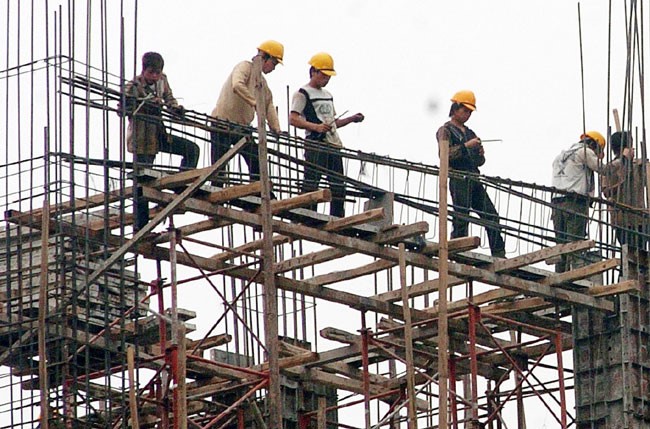
Many study report says that In India, about 48,000 workers die due to occupational accident annually and 38 Fatal accident occur every days in construction section industries and overall workplace death are Twenty Times higher than U.K.
As per Bureau of Labour Statics (BLS), U.S approximately 150,000 injuries occur due to accident each year at construction site and major numbers of Injuries occurs due to fall hazard and second one is contact with equipment is significant cause of injury for workers at construction site. Most injuries occur at construction site involves workers back, spines and trunks and majority of accident occur between age 25-34 year old.
In year 2005, As per National
Institute for Occupational Safety and Health (NIOSH),Total 1224 workers died at construction site, and construction
industries is most dangerous industries.
As
per The Occupational
Safety and Health Administration (OSHA), one Construction worker
injured in every Ten construction workers due to construction site accident.
Major Numbers of injury occurs due to Fall hazard at construction site due to
OSHA.
As per RIDDOR, In Construction industries, 30 fatal injuries to workers and seven to members of the public occurs during year 2018-19. During 2015-19, Average of 36 fatalities to workers and five to members of the public occurred each year. The major Numbers of Fatality occurred due to fall from height.
5. How Hazard Control Method Help to Prevent Accident
Hazard control method help to control work place risk. If work place Risk in construction Industries will be Tolerable level, then there will be no potential to harm to people or Organization or environment. Tolerable means, Risk is acceptable level as per organization policy. Adequate safety control measure reduce likelihood of event occurring or severity of harm whenever even occur or both together and work place risk has been controlled. Hazard control method is control work place hazard. Elimination, Substitution, Engineering control, Administrative control, PPE’s are example of hazard control method.
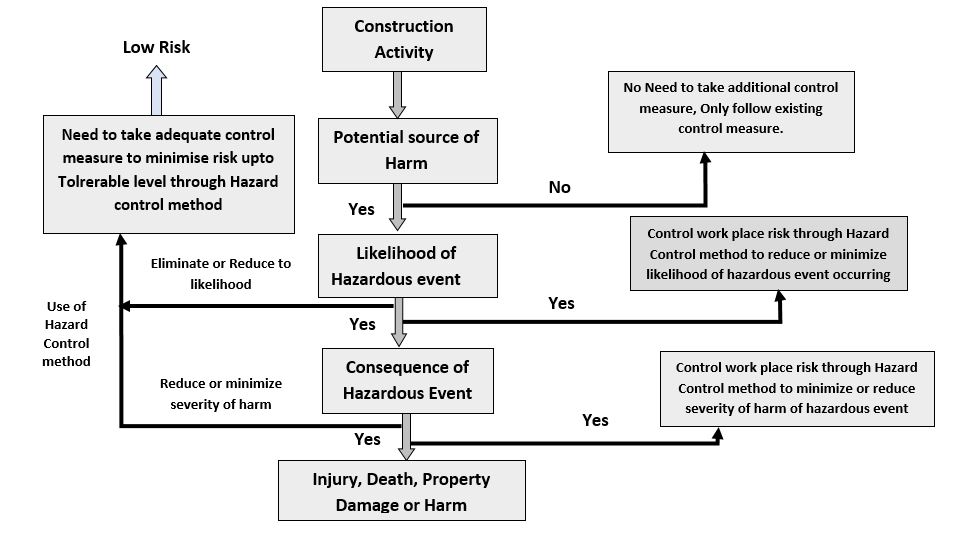
5.1 Hazard Control Method in Construction Industries
Method that is used to control hazard at construction industries work site is known as hazard control method. Hazard control method is also known as Hierarchy of hazard control method. Following below are steps that is used to control minimize risk As Low as Reasonable Practicable to reduce or eliminate likelihood of hazardous event occurring or Severity of harm of event or minimize to both (Likelihood and severity of hazardous event) together.
Hierarchy of Hazard Control Method
- EL – Eliminate
Cover hazard, Kill to hazard etc. - SL – Substitute
Use other route/Procedures, other material etc. - IS – Isolation
Put up temporary barrier, LOTO etc. - EC- Engineering Control
Construct Permanent wall, Mechanical Guard etc. - AC – Administration Control
Put up notice, Job rotation,Training, Enforcement of safety rules, Supervision etc. - PPE – Personal Protection Equipment
Use of Safety helmet, Safety Shoes, etc.

Eliminate to hazard is best option to control construction industries hazard. Therefore need to adopt Hazard control method step by step. Personnel Protective equipment is last consideration because it not eliminate to hazard, only minimize severity of harm
6. Conclusion:
Construction Industries is hazardous prone industries, So effective hazard control method is very helpful to control workplace risk. Accident occurs at construction site due to unsafe act and unsafe condition. Workplace risk can be controlled to Eliminate to hazard or prevent unsafe practices or to take needful action to prevent hazard and unsafe practices together. Hazard Control method is best method to control workplace risk at construction industries work site. Elimination, Substitution, Isolation, Engineering control, Administrative control & use PPE’s are method of hazard control. Elimination is best method and PPE’s is least one because PPE’s not eliminate to hazard, it only minimize the severity of harm.
Effective hazard control method help to Prevent accident and protect to environment in construction industries. Enforcement of Safety rules, regulation, can make Accident free to construction work site. Close supervision help to control unsafe act and motivate to workers to follow safety rules. Safety Activities such as Training, Reward program help to create awareness among site workmen including employees and control work place risk of construction site.
Reference:
- The Building & Other Construction Workers (Regulation of Employment and Conditions of Services) Act, 1996
- E. E. Koehn and N. K. Datta, “Quality, environmental, and health and safety management systems for construction engineering,”Journal of Construction Engineering and Management, vol.129,no.5,pp.562–569,2003.
- Pinto A, Nunes IL, Ribeiro R (2011) Occupational risk assessment in construction industry – Overview and reflection. Saf Sci 49, 614–24.
- Zhang S, Sulankivi K, Kiviniemi M, Romo I, Eastman CM, Teizer J (2015) BIM-based fall hazard identification and prevention in construction safety planning. Saf Sci 72, 31–45
- Manuele, F.A. (2008). Advanced safety management focusing
- Irumba R (2014) Spatial analysis of construction accidents in Kampala, Uganda. Saf Sci 64, 109–20
- EU-OSHA–European Agency for Safety and Health at Work, Accident Prevention in the Construction Sector,2003
- Wachter, J.K. (2012). Work practices and employee engagement/perception models for im
- S.Kumarand V.K.Bansal,“Construction safety knowledge for practitioners in the construction industry,”Journal of Frontiers in Construction Engineering,vol.2,no.2,pp.34–42,2013
- RIDDOR, ILO, OHSA, BLS, IS 18001
- ISEI Handbook
